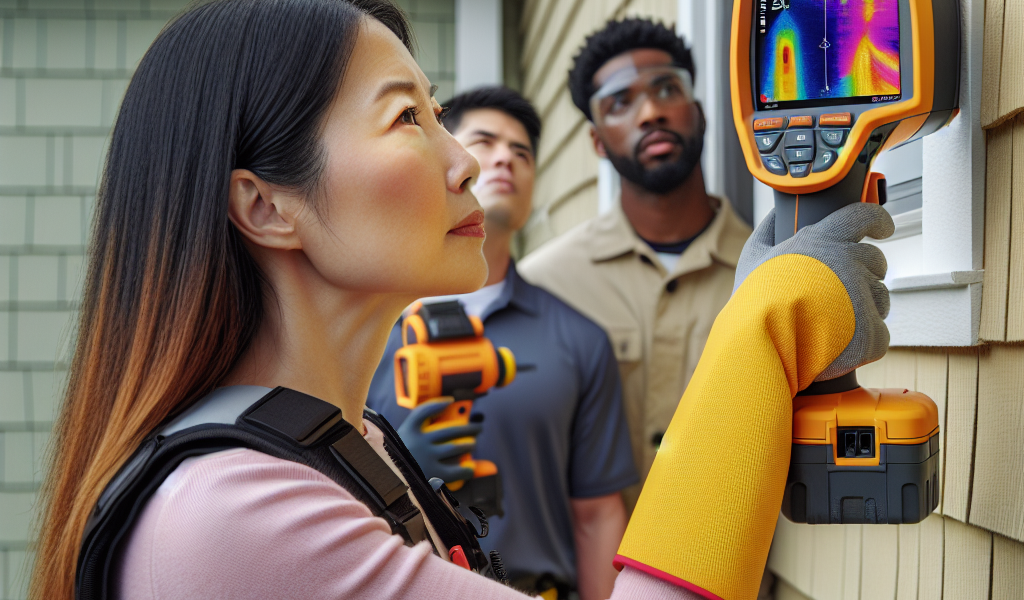Ensuring a safe and clean home is crucial, especially when it comes to the kitchen – the heart of any household. Regular inspections are necessary to identify potential hazards that could compromise food safety or hygiene. To conduct effective kitchen inspections, having essential tools at hand is vital. These tools not only aid in identifying areas that require attention but also help maintain cleanliness standards. In this article, we will explore some of the key inspection tools every homeowner should have in their kitchen to ensure a safe and clean environment for themselves and their loved ones.
Food Thermometers: Importance and Usage
In a world where food safety is of utmost importance, ensuring that your kitchen is equipped with the necessary tools for proper inspection is crucial. One such tool that should never be overlooked is the food thermometer. A food thermometer serves as a vital instrument in determining the internal temperature of cooked foods, enabling you to guarantee their safety for consumption.
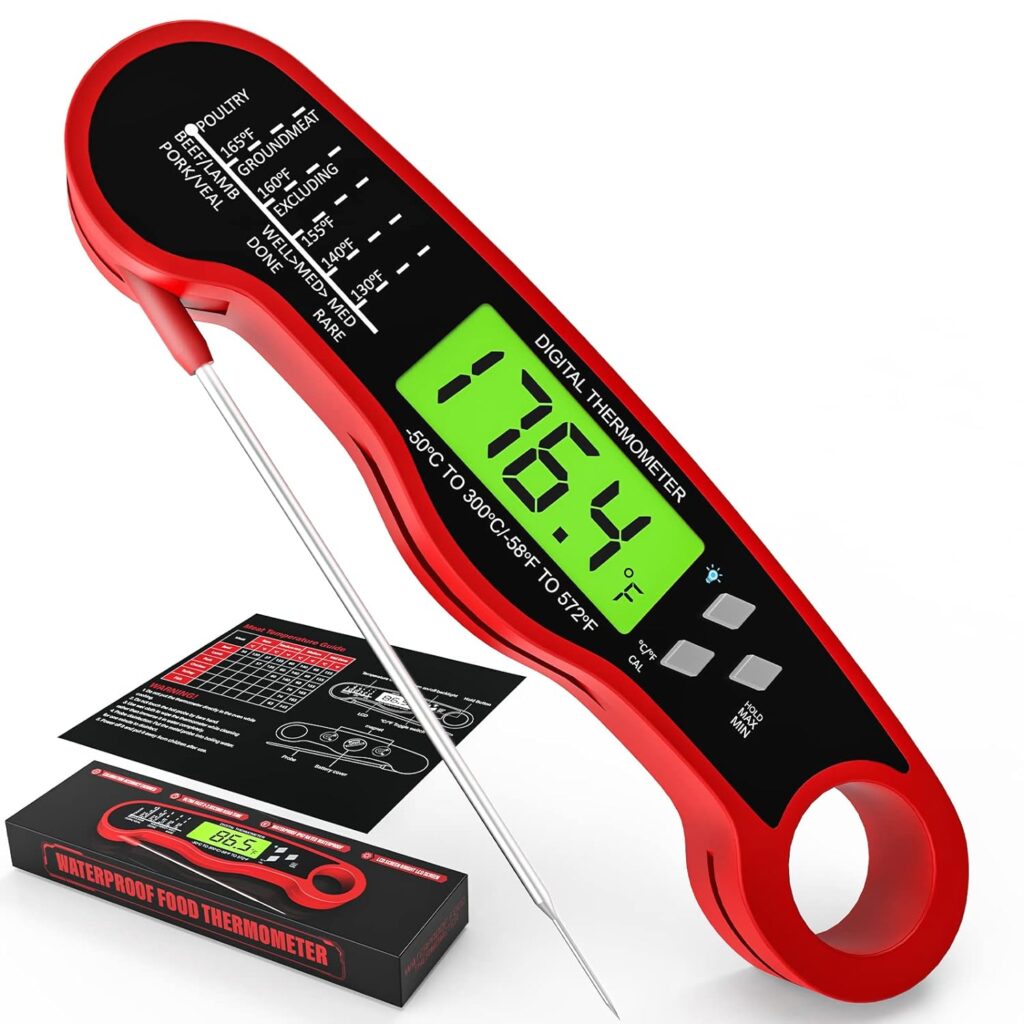
The primary importance of using a food thermometer lies in its ability to prevent foodborne illnesses. By accurately measuring the internal temperature of meat, poultry, seafood, and other perishable items, you can ensure that they have been properly cooked and are safe to eat. This simple yet effective device helps eliminate any guesswork when it comes to cooking times and temperatures.
There are various types of food thermometers available on the market today, each catering to different culinary needs. The most commonly used type is the instant-read thermometer which provides quick results by simply inserting it into the thickest part of the food item being tested. Digital thermometers offer an even faster response time while also providing precise measurements with ease. Oven-safe thermometers are ideal for monitoring roasts or whole poultry during cooking without needing constant manual checks.
To achieve accurate readings with your food thermometer, it is essential to know where exactly to place it within different types of meats or dishes being prepared. For example, when checking chicken breasts or steaks, insert the probe into the thickest part away from any bones or fat deposits as these areas tend to cook more slowly than others. When dealing with ground meats such as hamburgers or sausages, insert at least halfway through since these foods have irregular shapes due to mixing ingredients together.
The usage of a food thermometer goes beyond just ensuring safe temperatures; it also contributes significantly to maintaining quality in your culinary creations. Overcooking meat not only leads to dryness but can also result in loss of flavor and nutrients. Conversely, undercooked meat may pose health risks. With a food thermometer, you can accurately determine when your food is cooked to perfection, guaranteeing both safety and taste.
Furthermore, using a food thermometer promotes consistency in cooking. By establishing specific temperature guidelines for different types of foods, you create a standard that can be replicated with each preparation. This helps avoid instances where some portions may be undercooked while others are overdone, ensuring uniformity and customer satisfaction.
To ensure the longevity of your food thermometer and maintain its accuracy, proper care and calibration are essential. Clean the probe thoroughly after each use using warm soapy water or disinfectant wipes specifically designed for thermometers. Regularly calibrate your thermometer against an ice-water slurry or boiling water to verify its accuracy.
In conclusion, incorporating a food thermometer into your kitchen routine is imperative for maintaining a safe and clean home environment. Its importance cannot be understated when it comes to preventing foodborne illnesses by ensuring thorough cooking of perishable items. Additionally, accurate measurements provided by these tools contribute significantly to maintaining quality, consistency, and overall culinary success in all your endeavors as an aspiring chef or home cook
The Role of Sanitizing Solutions in Kitchen Inspections
The kitchen is the heart of any home. It’s where meals are prepared and memories are made. But, it’s also a place that requires strict adherence to hygiene standards to ensure the safety and well-being of those who use it. Kitchen inspections play a crucial role in maintaining these standards, and one key aspect of these inspections is the use of sanitizing solutions.
Sanitizing solutions are substances that kill or inhibit the growth of microorganisms on surfaces, utensils, and equipment in the kitchen. They are an essential tool in preventing cross-contamination and reducing the risk of foodborne illnesses. When used correctly, they can effectively eliminate bacteria, viruses, and other harmful pathogens from various surfaces in your kitchen.
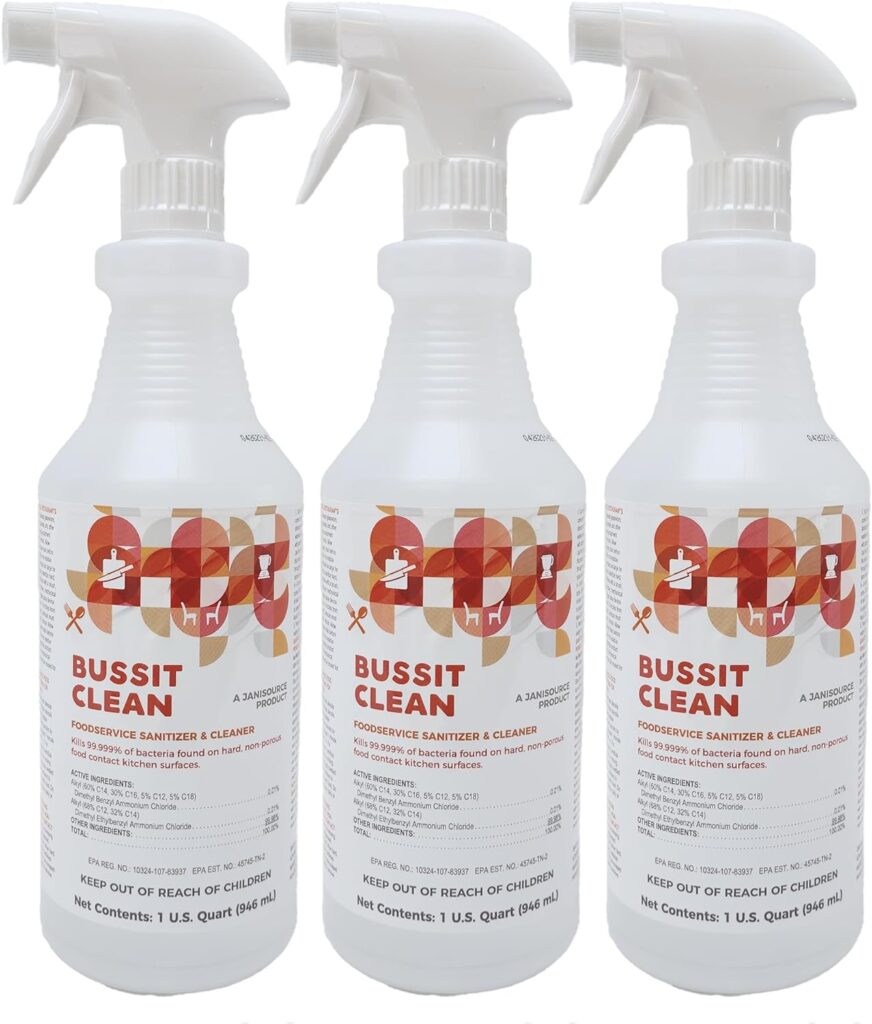
There are different types of sanitizing solutions available for use in kitchens. The most common ones include chlorine bleach, quaternary ammonium compounds (quats), iodine-based sanitizers, and hydrogen peroxide-based sanitizers. Each type has its own specific uses and instructions for proper application.
Chlorine bleach is widely used as a disinfectant due to its effectiveness against a broad spectrum of microorganisms. However, it can be corrosive to certain materials such as stainless steel if not properly diluted or rinsed off after use. Quats are another commonly used sanitizer that have less odor than bleach but may be less effective against some types of bacteria.
Iodine-based sanitizers offer an alternative for those looking for non-bleach options. They are generally safe to use on most surfaces but may leave stains if not properly diluted or removed from porous materials like wood or fabrics.
Hydrogen peroxide-based sanitizers provide another non-toxic option with good antimicrobial properties. They can be used on various surfaces but may cause discoloration if left undiluted for too long.
Regardless of which sanitizing solution you choose, proper usage is critical to achieving effective results during kitchen inspections. The first step is to read and follow the manufacturer’s instructions carefully. This includes diluting the solution to the recommended concentration and applying it for the specified contact time.
To ensure a thorough sanitization process, it is important to clean all surfaces before applying the sanitizer. Sanitizing solutions work best on clean surfaces free from grease, food debris, and dirt. Once cleaned, apply the sanitizer evenly across all surfaces using either a spray bottle or cloth.
During kitchen inspections, attention should be given not only to countertops and cutting boards but also to frequently touched items such as handles, knobs, faucets, and utensils. These areas are often overlooked but can harbor harmful bacteria if not properly sanitized.
After applying the sanitizer, allow sufficient contact time for it to effectively kill any microorganisms present. This can vary depending on the type of solution used, so refer to the manufacturer’s instructions for guidance.
Finally, rinse off any residual sanitizer with potable water or wipe down surfaces with a clean damp cloth if required by specific guidelines or regulations. This ensures that no harmful residue remains on surfaces that could potentially contaminate food or pose a risk to human health.
In conclusion, sanitizing solutions play an essential role in kitchen inspections by helping maintain hygiene standards in homes. Whether you choose chlorine bleach or alternative options like quats, iodine-based sanitizers or hydrogen peroxide-based sanitizers – proper usage is key. Follow manufacturer’s instructions diligently when diluting and applying these solutions for effective results during kitchen inspections. By incorporating sanitizing solutions into your routine cleaning practices regularly will help ensure that your home is safe and clean for everyone who uses it
All About Cutting Boards: Selection, Maintenance, and Inspection
When it comes to food preparation in the kitchen, cutting boards are an essential tool. They provide a stable surface for chopping vegetables, slicing meat, or mincing herbs. However, choosing the right cutting board is crucial for maintaining food safety and preventing cross-contamination.
The selection process starts with considering the material of the cutting board. There are various options available such as plastic, wood, bamboo, glass, and composite materials. Each type has its advantages and disadvantages.
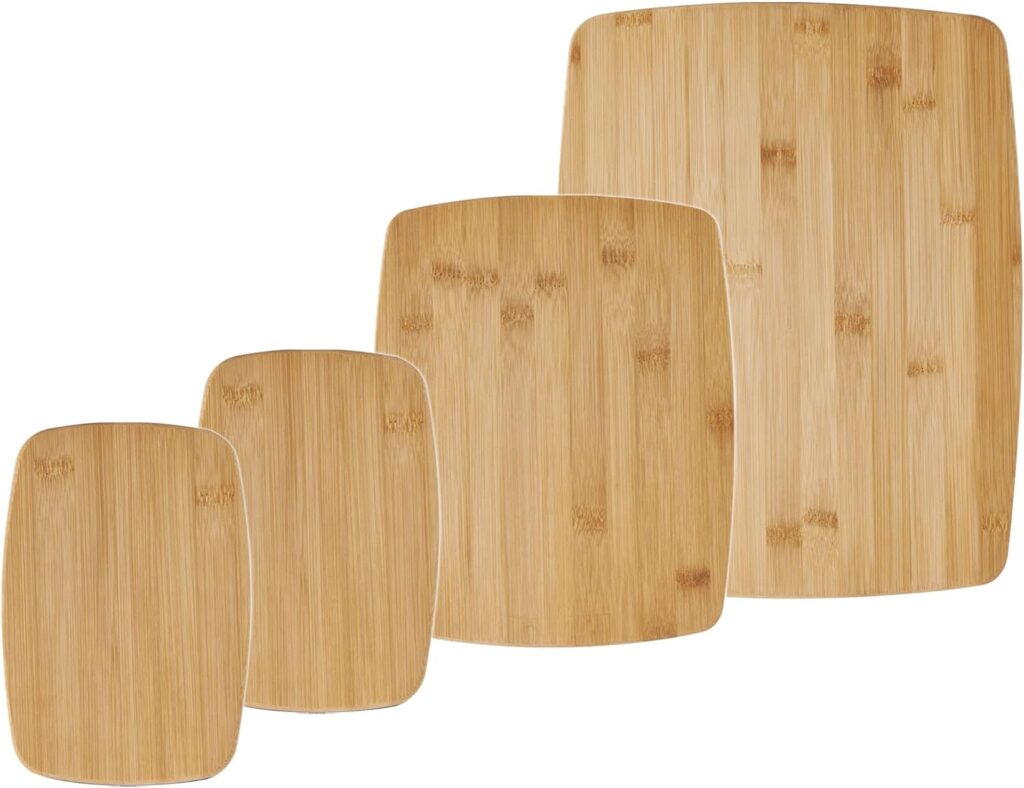
Plastic cutting boards are lightweight and easy to clean. They are also dishwasher-safe which makes them convenient for daily use. However, they can develop deep grooves over time where bacteria can hide. It is important to inspect plastic cutting boards regularly for any signs of wear and tear.
Wooden cutting boards have been used for centuries due to their durability and aesthetic appeal. Unlike plastic boards that show visible knife marks on the surface immediately after use; wooden ones tend to have self-healing properties where shallow cuts disappear over time through natural drying processes. Proper maintenance involves regular oiling with food-grade mineral oil or beeswax to prevent cracking or warping.
Bamboo cutting boards offer similar benefits as wooden ones but come from a more sustainable source since bamboo grows faster than hardwood trees like maple or oak. These types of cutting boards require similar maintenance routines as wooden ones but need extra care when washing by hand as excessive moisture can cause splitting.
Glass cutting boards provide a sleek and hygienic option because they do not absorb odors or stains like other materials might do over time; however these surfaces can be very hard on knives leading them dull more quickly than others would so it’s important not only select tempered glass instead ordinary windowpane one (less prone chipping) but be cautious while using sharp knives around them too!
Composite material cutting boards consist of different layers bonded together usually made up resin-infused paper or fiber materials which makes them heat-resistant and less prone to warping. They are easy to clean, but they can be quite heavy and have a high price point compared to other options.
Regardless of the material chosen, it is essential to maintain cutting boards properly. This includes regular cleaning with hot soapy water after each use and allowing them to dry completely before storing. Avoid using abrasive cleaners or harsh chemicals that can damage the surface of the board.
In addition, inspecting cutting boards for signs of wear is crucial for food safety. Look out for deep grooves or cracks where bacteria could hide and multiply. If such damage is found, it may be time to replace the cutting board as no amount of cleaning can eliminate all potential pathogens.
It is worth noting that using separate cutting boards for different types of food – one exclusively for raw meat and another for fruits and vegetables – helps prevent cross-contamination during meal preparation. This practice ensures that harmful bacteria from raw meat do not come into contact with ready-to-eat foods.
In conclusion, selecting the right cutting board material based on personal preferences and considering maintenance requirements are vital steps towards ensuring a safe kitchen environment. Regular inspection allows you to identify any signs of wear or damage promptly, preventing contamination risks associated with old or worn-out cutting boards. By following these guidelines, you can maintain a clean and sanitary kitchen while enjoying your culinary endeavors!
Proper Handling of Knives for a Safe Kitchen Environment
When it comes to ensuring a safe and clean home, the kitchen is an area that requires special attention. One essential aspect of kitchen safety is the proper handling of knives. Knives are one of the most commonly used tools in the kitchen, but if not handled correctly, they can pose serious risks.
To ensure a safe kitchen environment, it is crucial to understand how to handle knives properly. The first step in knife safety is choosing the right knife for each task. Different types of knives have different purposes, and using the wrong knife can lead to accidents. For example, a chef’s knife with its long blade and pointed tip should be used for slicing and chopping fruits and vegetables while a serrated bread knife would be best suited for cutting through crusty loaves of bread.
Once you have chosen the appropriate knife for your task, it is important to hold it correctly. The grip on a knife should be firm but not too tight as this may cause fatigue or even loss of control during use. The fingers should wrap around the handle with your thumb resting on one side for stability.
In addition to holding the knife properly, it is also important to practice good cutting techniques. When using a chef’s knife or any other type of large blade, always keep your free hand curled under your fingers while guiding food into place. This will prevent accidental cuts if the blade slips off target.
Another important aspect of safely handling knives in the kitchen involves maintaining their sharpness. A dull blade can actually be more dangerous than a sharp one since additional pressure may be required when cutting which increases chances for slippage or uneven cuts that can result in injuries.
Regularly sharpening your knives will not only make them safer but also improve their overall performance in terms of precision and efficiency during use.
Furthermore, storing knives properly plays an integral role in creating a safe kitchen environment. Simply tossing knives into a drawer can result in unnecessary accidents. Using a knife block or magnetic strip is recommended to keep your knives organized and easily accessible, while also reducing the risk of accidental cuts when reaching into drawers.
Cleaning knives is another important aspect of maintaining their safety. Knives should be washed by hand with warm soapy water immediately after use to prevent food particles from drying on the blade. Drying them thoroughly before storing helps prevent rusting and ensures they are ready for use whenever needed.
In conclusion, proper handling of knives is essential for ensuring a safe kitchen environment. By choosing the right knife for each task, holding it correctly, practicing good cutting techniques, regularly sharpening and properly storing and cleaning them, you can minimize the risks associated with using knives in the kitchen. Taking these precautions will not only protect yourself but also create a clean and safe home for everyone who enjoys delicious meals prepared with care in your kitchen.
Essential Kitchen Scales for Accurate Measurements
The kitchen is the heart of every home. It is where delicious meals are prepared, memorable conversations take place, and countless memories are made. However, it is also important to ensure that this vital space remains clean and safe for everyone who uses it. One way to achieve this goal is by using essential kitchen inspection tools.
Accurate measurements play a crucial role in cooking and baking. Whether you are following a recipe or experimenting with your own culinary creations, precise measurements can make all the difference in the final outcome of your dish. This is where essential kitchen scales come into play.
Kitchen scales provide accurate weight measurements that allow for more precise ingredient proportions in recipes. While measuring cups can give you an approximate idea of how much flour or sugar you are adding to a mixture, they cannot match the accuracy provided by kitchen scales.
By weighing ingredients instead of relying on volume measurements alone, you can avoid inconsistencies in your dishes’ taste and texture. Imagine biting into a cake with unevenly distributed ingredients – some parts may be overly sweet while others lack flavor entirely. With precise measurements from kitchen scales, these issues become less likely to occur.
Moreover, when it comes to dietary restrictions or specialized diets such as gluten-free or keto-friendly cooking, accurate ingredient ratios become even more critical. In these cases, small deviations from recommended quantities could ruin an entire meal’s intended purpose or compromise its nutritional value.
In addition to providing precision in cooking and baking endeavors, kitchen scales also contribute significantly to food safety practices within our homes. Cross-contamination caused by improper handling of raw meat can lead to severe health hazards if not dealt with correctly.
Using separate cutting boards for different types of food helps reduce cross-contamination risks; however, estimating portion sizes without proper weighing makes implementing this practice challenging at times. By utilizing a scale during meal preparation routines – whether when dividing large cuts into smaller portions or portioning out meat for specific dishes – you can be more confident in your efforts to maintain food safety.
Kitchen scales come in various designs, from traditional mechanical models to digital scales with sleek, user-friendly interfaces. While both types offer accurate measurements, digital scales provide additional features that may enhance your cooking experience.
Many digital kitchen scales have built-in timers and memory functions that allow for multitasking while ensuring accuracy. This is particularly beneficial when following complex recipes that require precise timing or juggling multiple ingredients simultaneously.
Furthermore, some digital models feature a tare function, which enables the scale to deduct the weight of containers or plates used during food preparation. This eliminates the need for manual calculations and reduces unnecessary mess and cleanup after each weighing.
In conclusion, essential kitchen inspection tools such as kitchen scales are indispensable when it comes to maintaining a safe and clean home environment. Not only do they contribute to the accuracy and consistency of your culinary creations but they also help prevent cross-contamination risks through proper handling of raw ingredients. So why settle for guesswork when preparing meals? Invest in a reliable kitchen scale today and enjoy the peace of mind that comes with precise measurements!
Examining the Significance of Oven Thermometers in Food Safety
In today’s fast-paced world, ensuring the safety and cleanliness of our homes has become more important than ever. One area that often goes overlooked is the kitchen, where food preparation takes place. From cutting boards to knives and pots to pans, there are countless tools that help us create delicious meals for ourselves and our loved ones. However, one tool that is often underestimated in its importance is the oven thermometer.
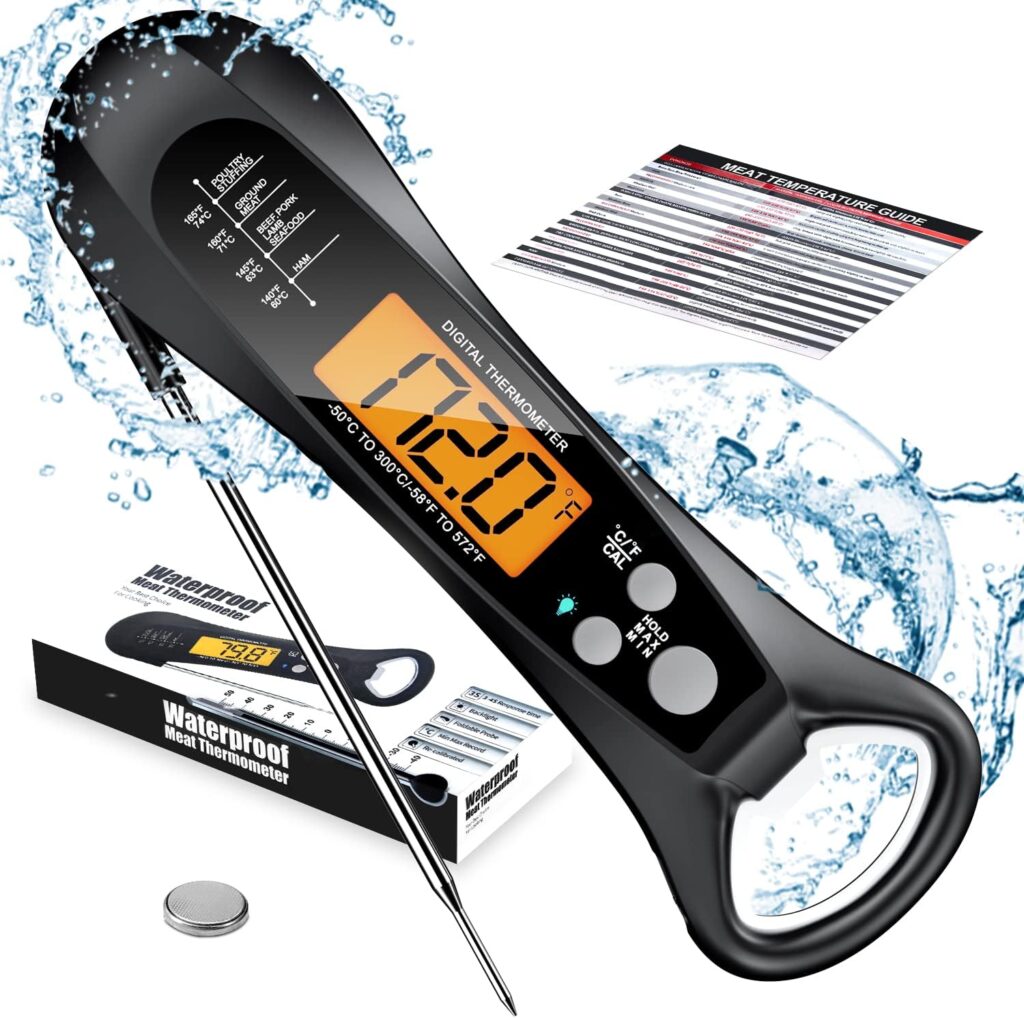
An oven thermometer may seem like a small and insignificant device compared to other kitchen gadgets, but its role in maintaining food safety cannot be overstated. By providing an accurate reading of the temperature inside your oven, it allows you to ensure that your food is cooked thoroughly and at a safe temperature.
The importance of cooking food at the right temperature cannot be emphasized enough. Undercooking can result in harmful bacteria such as Salmonella or E.coli surviving in your dish, putting you and your family at risk of serious illnesses. On the other hand, overcooking can lead to dry and tasteless meals which no one enjoys. This is why using an oven thermometer is crucial – it helps you achieve that perfect balance between safe cooking temperatures and great-tasting dishes.
You might think that relying on the built-in thermostat of your oven would suffice; however, studies have shown that these thermostats can often be inaccurate by up to 25 degrees Fahrenheit! Such discrepancies may go unnoticed if we trust our ovens blindly without additional verification from an independent source like an oven thermometer.
To use an oven thermometer effectively, first preheat your oven according to the recipe’s instructions or desired temperature setting. Place the thermometer inside before closing the door tightly for about ten minutes so it can acclimate itself properly within this enclosed environment while registering an accurate reading based on real-time conditions rather than solely relying on preset settings or guesswork.
Furthermore, regular calibration of your oven thermometer is essential. Over time, these devices can become less accurate due to wear and tear or exposure to extreme temperatures. To ensure the safety of your food, it is recommended that you calibrate your oven thermometer at least once a year using an ice bath or boiling water method.
While many might consider oven thermometers as merely an accessory or unnecessary expense, investing in one could potentially save you from foodborne illnesses caused by undercooked meals. By taking this simple step towards ensuring food safety, you are not only protecting yourself and your loved ones but also promoting a clean and healthy home environment.
In conclusion, the significance of oven thermometers in maintaining food safety cannot be overstated. They provide an accurate reading of the temperature inside your oven, enabling you to cook meals thoroughly without compromising taste or health. By relying on independent verification rather than trusting the built-in thermostat alone, you can ensure that harmful bacteria are eradicated while enjoying perfectly cooked dishes every time. Remember to calibrate your oven thermometer regularly for optimal accuracy. Investing in an oven thermometer is a small price to pay for the peace of mind knowing that you are doing everything possible to keep yourself and those around you safe from foodborne illnesses.
Must-Have Cleaning Tools for Effective Kitchen Hygiene
The kitchen is one of the most important areas in any home. It is where we prepare and cook our meals, share family moments, and create delicious memories. However, keeping the kitchen clean and hygienic can be quite a challenge. This is why having the right tools for effective kitchen hygiene is essential.
Firstly, let’s talk about cutting boards. Cutting boards are an indispensable tool in every kitchen. They provide a stable surface for chopping vegetables, fruits, meat, and other ingredients. However, they can also harbor harmful bacteria if not properly cleaned after each use.
To ensure your cutting board remains clean and safe to use, invest in a good quality cutting board brush or scraper. These tools are designed to effectively remove food particles that get stuck on the surface of the board during use. Additionally, using hot water with soap or a mild detergent will help eliminate any bacteria present.
Next on our list are sponges and dishcloths – everyday items that often go unnoticed when it comes to cleaning practices. Sponges and dishcloths can quickly become breeding grounds for bacteria due to their porous nature.
To combat this issue, it is crucial to regularly sanitize these items by soaking them in hot water with bleach or running them through a dishwasher cycle at high temperatures. Alternatively, consider replacing your sponges frequently or using disposable ones.
Moving on to another vital tool for maintaining cleanliness in the kitchen: oven mitts or gloves should always be readily available when cooking or baking at high temperatures as they protect your hands from burns caused by hot surfaces such as pots, pans, and ovens.
Regularly washing oven mitts helps prevent cross-contamination between different dishes you handle while wearing them – especially important if you’re handling raw meats alongside other ingredients during meal preparation.
Now let’s discuss thermometers – a must-have tool for ensuring food safety within your home kitchen environment. Proper cooking temperature is crucial in preventing foodborne illnesses caused by undercooked or improperly cooked food.
Investing in a reliable food thermometer will help you monitor the temperature of your meats, poultry, and other dishes. It is especially important when cooking large cuts of meat that may have varying degrees of doneness throughout.
Another essential tool for effective kitchen hygiene is the dishwasher – a modern convenience that saves time and ensures thorough cleaning. Dishwashers not only sanitize your dishes with high temperatures but also effectively remove grease, food particles, and stains.
To maximize its efficiency, always scrape off excess food before loading your dishes into the dishwasher. Additionally, ensure proper maintenance by regularly cleaning filters and checking for any blockages in the spray arms to prevent build-up and potential contamination.
Lastly, we cannot forget about gloves – an often overlooked tool when it comes to kitchen cleanliness. Disposable gloves are particularly useful when handling raw meat or potentially harmful substances like chemicals or allergens.
Wearing gloves helps protect both yourself and others from cross-contamination. Remember to change them frequently during meal preparation or whenever they become soiled or torn.
In conclusion, maintaining a safe and clean home begins with effective kitchen hygiene practices. Investing in essential tools such as cutting board brushes/scrapers, sanitizing sponges/dishcloths regularly, using oven mitts/gloves while handling hot surfaces, utilizing thermometers for monitoring food temperatures accurately are all crucial steps towards achieving optimal cleanliness in your kitchen environment. Furthermore,cleaning tools such as dishwashers can greatly assist in ensuring thorough sanitation of your dishes while disposable gloves provide an extra layer of protection against harmful substances during meal preparation. By implementing these practices consistently,you can create a safe and hygienic kitchen space for you and your loved ones
Understanding the Importance of Refrigerator Thermometers in Preserving Food Quality
Preserving food quality is a crucial aspect of ensuring a safe and clean home. The kitchen, being the heart of any household, must be equipped with essential tools to assist in this endeavor. One such tool that often goes unnoticed but plays a vital role is the refrigerator thermometer.
The refrigerator thermometer serves as an indispensable device for monitoring and maintaining appropriate temperatures inside your fridge. It helps prevent bacterial growth, spoilage, and potential foodborne illnesses. In this article, we will delve into why having a reliable refrigerator thermometer is so crucial for preserving food quality.
Firstly, it is important to understand that refrigerators are not always consistent in maintaining optimal temperature levels throughout their compartments. Hot spots or cold zones may exist due to factors like poor air circulation or faulty temperature controls. This means that certain areas within your fridge might be warmer than others without you realizing it.
Here’s where a refrigerator thermometer comes into play: by accurately measuring the internal temperature of your appliance at various locations, it provides valuable insights on whether your fridge is operating within safe parameters or if adjustments need to be made. This knowledge empowers you to take proactive measures before harmful bacteria start multiplying.
Secondly, proper storage temperatures are essential for different types of perishable items such as dairy products, meat, poultry, and seafood. Each category has specific temperature requirements that help maintain freshness while preventing contamination risks.
For instance, refrigerated meats should ideally be kept below 40°F (4°C) to minimize bacterial growth and extend shelf life. Similarly, dairy products like milk and cheese require slightly higher temperatures between 32-40°F (0-4°C) to inhibit spoilage organisms effectively.
Without an accurate reading from a reliable refrigerator thermometer, one can never be entirely sure whether these critical thresholds are being maintained consistently over time. Consequently risking the health and safety of those consuming these stored foods becomes a real concern.
Thirdly, temperature fluctuations in the refrigerator can often occur due to various reasons such as power outages or accidental door openings. These variations may go unnoticed unless you have a thermometer to alert you when temperatures deviate from safe ranges.
A sudden change in temperature could compromise the quality and safety of your stored food items. A refrigerator thermometer with an audible alarm feature will promptly notify you if the internal temperature rises above or falls below desired levels, giving you the opportunity to address any issues immediately before they escalate into bigger problems.
Moreover, some refrigerators come with built-in thermometers; however, these are not always reliable. Often, they display inaccurate readings due to poor placement or calibration issues. Therefore, it is crucial to invest in an independent thermometer that can provide accurate and consistent readings regardless of where it is positioned within your fridge.
In conclusion, preserving food quality requires careful monitoring of storage temperatures inside your refrigerator. By using a reliable and accurate refrigerator thermometer, you ensure that perishable items are kept at optimal conditions for freshness while minimizing bacterial growth and contamination risks.
Remember, knowledge is power! With a good understanding of why refrigerator thermometers are essential tools for maintaining food safety and quality standards in your home kitchen, you take proactive steps towards ensuring a safe and clean environment for yourself and your loved ones. So do not overlook this seemingly small device – its impact on the overall well-being cannot be overstated!
Ensuring Fire Safety with Smoke Detectors in the Kitchen
Fire safety is of paramount importance in any home, and the kitchen is an area that requires special attention due to the potential for fires to start from cooking activities. One essential tool for ensuring fire safety in the kitchen is a smoke detector. In this article, we will discuss the importance of having smoke detectors installed in your kitchen and how they can help prevent devastating fires.
First and foremost, it is crucial to understand how smoke detectors work. These devices are designed to detect particles or gases produced by combustion, such as smoke or carbon monoxide. When these particles are detected, an alarm will sound, alerting you to a possible fire. Smoke detectors typically consist of two main components: a sensor that detects smoke particles and an audible alarm that sounds when smoke is detected.
In the context of kitchens, where cooking activities can generate smoke and other airborne particles, having a working smoke detector becomes even more critical. The National Fire Protection Association (NFPA) recommends installing at least one smoke detector on every level of your home including inside each bedroom and outside sleeping areas. For optimal protection, it is advisable to install additional detectors near the kitchen area.
When choosing a suitable location for your kitchen’s smoke detector(s), it’s important to consider its proximity to potential sources of combustion or heat-producing appliances such as stoves or ovens. Mounting them too close may result in frequent false alarms due to normal cooking activities like grilling or broiling; whereas positioning them too far away might delay detection during an actual fire incident.
It’s worth noting that there are different types of sensors used in modern-day smoke detectors: ionization and photoelectric sensors. Ionization sensors are generally more sensitive to fast-burning fires with flaming combustion while photoelectric sensors excel at detecting slow-smoldering fires characterized by smoky conditions before flames become visible.
To ensure comprehensive coverage against all types of fires, it is recommended to use a dual-sensor smoke detector that combines both ionization and photoelectric sensors. These detectors offer the best chance of early detection regardless of the type of fire that may occur in your kitchen.
Additionally, regular maintenance and testing are essential for smoke detectors to function properly when needed. The NFPA advises checking your smoke detectors monthly by pressing their test buttons to ensure they are working correctly. Furthermore, it is important to replace batteries at least once a year or whenever low-battery warning signals are emitted – typically indicated by intermittent beeping sounds.
In conclusion, having properly functioning smoke detectors installed in your kitchen is an indispensable safety measure for any home. Their ability to detect early signs of fire can mean the difference between a manageable incident and a catastrophic event. By understanding how these devices work, choosing appropriate sensor types, and conducting regular maintenance checks, you can significantly reduce the risk of fire-related accidents in your kitchen while ensuring the safety and well-being of yourself and loved ones within your home.
The Indispensable Utility of Dish Racks and Drying Mats
When it comes to maintaining a safe and clean home, the kitchen is an area that requires special attention. It is the heart of the house where meals are prepared, and it is essential to keep it free from bacteria and germs. To achieve this, having the right tools for kitchen inspection becomes crucial. One such tool that plays a significant role in ensuring cleanliness in the kitchen is dish racks.
Dish racks are indispensable when it comes to proper drying of dishes after washing them. They provide a designated space for dishes to air dry naturally, preventing water spots and reducing the risk of bacterial growth. By allowing dishes to dry upright, dish racks enable effective drainage of excess water from plates, glasses, bowls, and utensils.
In addition to facilitating better hygiene practices by promoting proper drying techniques, dish racks also contribute to organizing your kitchen space efficiently. With different compartments designed specifically for various types of dishes or cutlery items such as spoons and forks, these racks help keep everything in order while they dry off thoroughly.
Furthermore, dish racks come in various materials like stainless steel or plastic with different sizes available according to your needs. Stainless steel dish racks not only look sleek but are also rust-resistant and sturdy enough to withstand regular use over extended periods without losing their shape or compromising on durability.
To complement dish racks further and ensure maximum protection against moisture buildup on countertops or other surfaces adjacent to sinks or areas where wet dishes are placed after cleaning; investing in a reliable drying mat becomes equally important.
Drying mats serve as an absorbent barrier between freshly washed dishes placed on them and countertops underneath. They soak up any remaining droplets from wet plates or glasses effectively while providing ample ventilation for evaporation during the drying process – minimizing potential mold formation due to trapped moisture.
Similar to dish rack designs being tailored for specific needs; drying mats also come in different sizes suitable for varying volumes of washed items at once—allowing you flexibility to choose one that best fits your kitchen requirements.
Some drying mats even feature antimicrobial properties, providing an extra layer of protection against bacterial growth and odors. These mats incorporate special materials that inhibit the growth of bacteria by breaking down their cell walls upon contact.
In conclusion, dish racks and drying mats are indispensable tools when it comes to ensuring a safe and clean home. Dish racks promote proper drying techniques by allowing dishes to air dry naturally while preventing water spots and reducing the risk of bacterial growth. They also help in organizing your kitchen space efficiently. Drying mats, on the other hand, serve as absorbent barriers between wet dishes and countertops, preventing moisture buildup and potential mold formation. By investing in these essential kitchen inspection tools, you can maintain a hygienic environment in your kitchen while keeping it organized at all times.
The Value of Non-Slip Floor Mats to Prevent Accidents in the Kitchen
The kitchen is often referred to as the heart of the home, and it’s where families come together to cook meals, share stories, and create memories. However, with all the hustle and bustle that takes place in this important space, it’s crucial to ensure that it remains a safe and clean environment. One way to achieve this is by utilizing essential kitchen inspection tools. These tools not only help identify potential hazards but also assist in maintaining cleanliness standards.
One valuable tool for preventing accidents in the kitchen is non-slip floor mats. The importance of having these mats cannot be overstated as they provide an added layer of protection against slips and falls. In a busy kitchen environment where spills are bound to occur, non-slip floor mats offer a secure surface for individuals working on their feet.
These mats are specifically designed with textured surfaces that provide grip even when wet or greasy substances come into contact with them. This feature greatly reduces the risk of slipping accidents that can lead to injuries such as sprains or fractures. By investing in high-quality non-slip floor mats, homeowners can create a safer environment for both themselves and their loved ones.
Moreover, aside from ensuring safety, these floor mats also contribute significantly to maintaining cleanliness standards within the kitchen area. They serve as an effective barrier between food particles or liquids and the underlying flooring surface. As spills happen frequently during meal preparation or cooking processes, having non-slip floor mats minimizes damage caused by accidental splashes or leaks.
When food spills onto these mats instead of directly onto the floor itself, cleaning becomes more manageable since you don’t have to deal with stains seeping into porous materials like tile grout or hardwood floors. Instead, one can simply remove the mat from its designated spot and wipe away any residue before placing it back down – quick and convenient!
In addition to being easy-to-clean accessories in your culinary space arsenal ,non-slip floor mats are also designed to be durable and long-lasting. Made from materials such as rubber or PVC, they are resistant to wear and tear caused by regular foot traffic, spills, or even sharp utensils that might accidentally come into contact with them.
These mats not only contribute to the overall safety of your kitchen but also add a touch of style with their various design options. Homeowners can choose from a wide range of colors and patterns that complement their existing decor while simultaneously enhancing the aesthetic appeal of the space.
In conclusion, non-slip floor mats play an essential role in maintaining safety and cleanliness in your kitchen. By providing traction on slippery surfaces, these mats help prevent accidents like slips and falls that could result in serious injuries. Additionally, they act as protective barriers against spills, making cleanup easier and minimizing potential damage to flooring materials. With their durability and stylish designs, non-slip floor mats are a worthwhile investment for any homeowner who values both functionality and aesthetics in their kitchen space. So take this opportunity to enhance the safety standards of your home while adding a touch of style – invest in non-slip floor mats today!
Key Aspects to Consider When Choosing Pest Control Tools for a Clean Home
When it comes to maintaining a safe and clean home, one area that often requires special attention is the kitchen. As the heart of the home, the kitchen is where food preparation takes place, making it essential to ensure proper hygiene and sanitation. One way to achieve this is by conducting regular kitchen inspections using the right tools. In this article, we will explore 12 key aspects to consider when choosing pest control tools for a clean home.
Firstly, it is crucial to invest in high-quality pest control tools that are specifically designed for use in kitchens. These tools should be made from durable materials that can withstand constant use and exposure to various substances commonly found in kitchens such as water, grease, and cleaning agents.
Secondly, consider choosing pest control tools that are easy to handle and maneuver. This will make your inspection process more efficient and less time-consuming. Tools with ergonomic handles or grips can help reduce hand fatigue during prolonged use.
Furthermore, opt for pest control tools that have adjustable features such as extendable handles or interchangeable heads. This flexibility allows you to reach difficult-to-access areas like tight corners or high shelves where pests may hide or nest.
Another important aspect to consider when selecting kitchen inspection tools is their compatibility with different surfaces. Ensure that these tools do not cause any damage or scratches on countertops, appliances, or other surfaces while performing inspections.
Additionally, look for pest control tools with built-in safety features such as protective shields or guards. These features provide an added layer of protection against accidental injuries during inspections.
Moreover, consider choosing versatile pest control tools that serve multiple purposes. For example, there are inspection mirrors available with built-in LED lights which allow you to see clearly in dark areas under sinks or behind appliances.
In terms of practicality, it is advisable to select lightweight and compact pest control tools. This makes them easier to store when not in use and minimizes clutter in your kitchen space.
Furthermore,a crucial factor to consider is the cost-effectiveness of pest control tools. While it may be tempting to choose cheaper options, investing in high-quality tools that will last longer can save you money in the long run.
Moreover, take into account the ease of cleaning and maintaining these tools. Pest control tools should be easy to clean after each use to prevent cross-contamination and maintain proper hygiene standards.
Additionally, when selecting kitchen inspection tools, consider their compatibility with other equipment or technology used for pest control purposes. For example, some inspection cameras can be connected wirelessly to your smartphone or computer, allowing you to capture images or videos during inspections for future reference or analysis.
Lastly,it is crucial to ensure that the pest control tools you choose comply with industry standards and regulations. Look for certifications or approvals from relevant authorities indicating their compliance with safety guidelines.
In conclusion, choosing the right pest control tools for kitchen inspections is essential for maintaining a safe and clean home environment. By considering aspects such as durability, ergonomics, versatility, practicality,cost-effectiveness,safety features,and compatibility,you can make an informed decision on which tools best suit your needs. Remember that regular inspections using these high-quality tools are crucial in preventing infestations and ensuring optimal hygiene in your kitchen space.In conclusion, essential kitchen inspection tools play a crucial role in ensuring a safe and clean home. These tools enable homeowners to detect potential hazards such as food contamination or improper storage practices that may lead to health risks. Regular use of these tools promotes hygiene and allows for proper maintenance of kitchen appliances and utensils. By investing in the right inspection tools, homeowners can prioritize the safety of their household members and maintain a healthy living environment.
